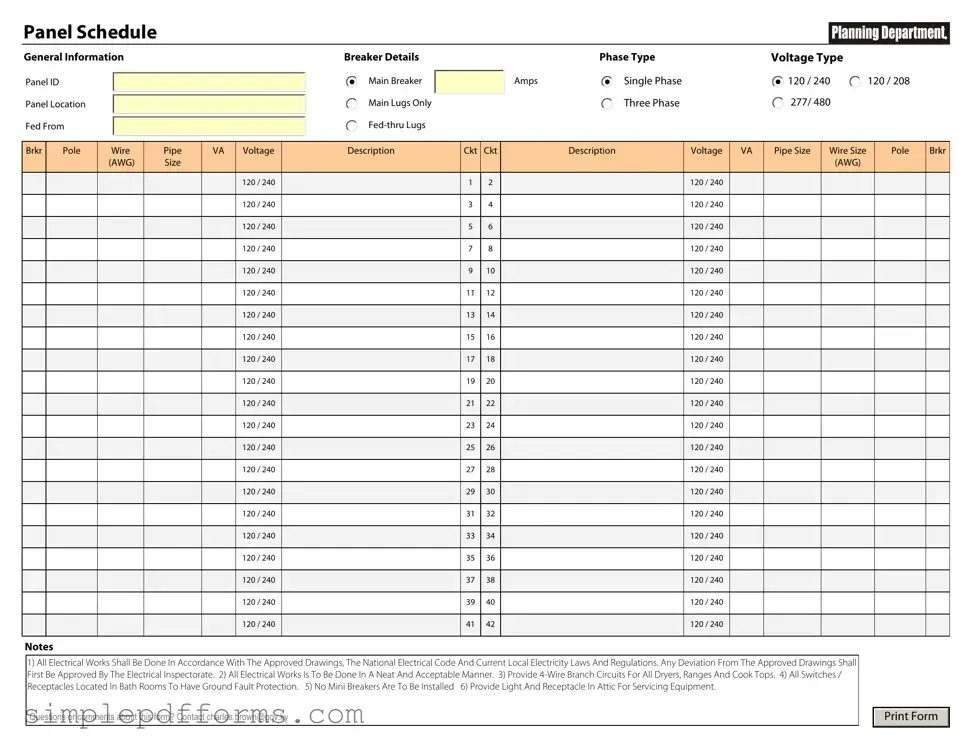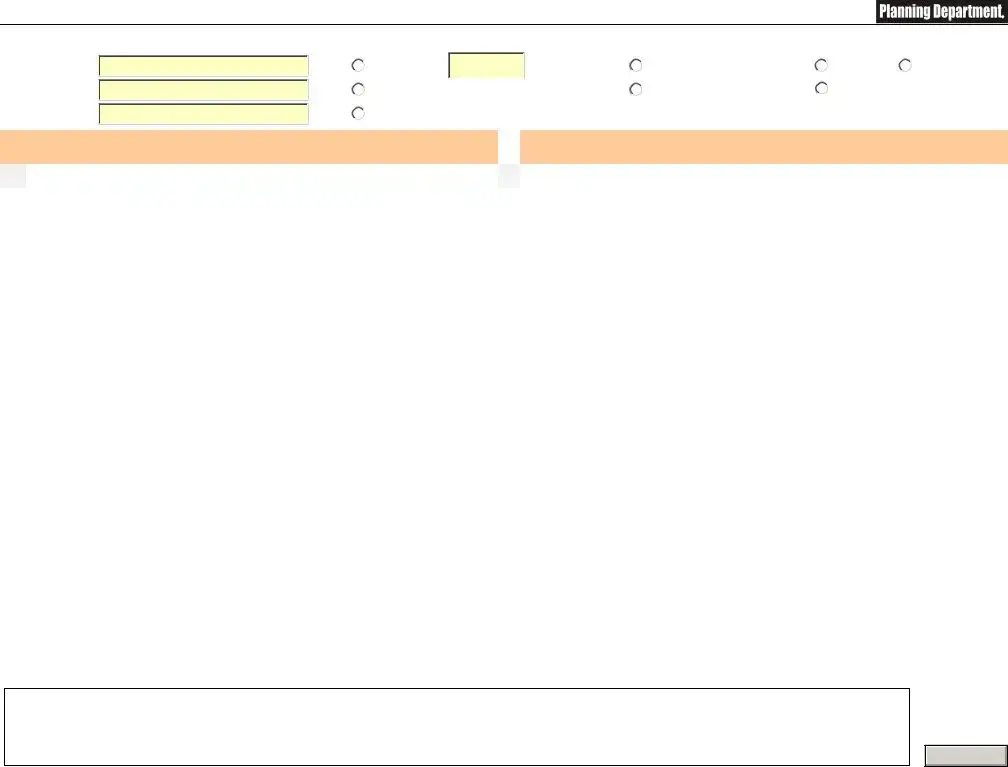Filling out an Electrical Panel Schedule form is crucial for ensuring that electrical systems operate safely and efficiently. However, many individuals make common mistakes that can lead to confusion or even safety hazards. Understanding these pitfalls can help prevent errors and improve the overall quality of the electrical documentation.
One frequent mistake is inaccurate labeling of circuits. Each circuit in an electrical panel should have a clear and specific label that indicates its purpose. When individuals use vague or generic labels, it becomes challenging to identify which circuit controls which area or appliance. This can lead to unnecessary troubleshooting and potential safety risks during maintenance or repairs.
Another common error is failing to include all necessary information. The Electrical Panel Schedule form requires specific details, such as the amperage rating, voltage, and circuit type. Omitting any of this information can create gaps in understanding the electrical system's capacity and safety measures. It is essential to ensure that every field is filled out completely to provide a comprehensive overview of the electrical panel.
Additionally, many people overlook the importance of updating the schedule regularly. As modifications are made to the electrical system—like adding new circuits or replacing existing ones—the panel schedule should reflect these changes. Neglecting to update the form can result in outdated information, which poses risks during inspections or emergency situations. Keeping the schedule current is vital for maintaining safety and compliance.
Lastly, not verifying the information before submission is a critical mistake. Double-checking the entries can help catch errors, such as incorrect circuit numbers or mismatched amperage ratings. Taking the time to review the completed form ensures that all details are accurate and consistent, ultimately leading to a safer and more reliable electrical system.

